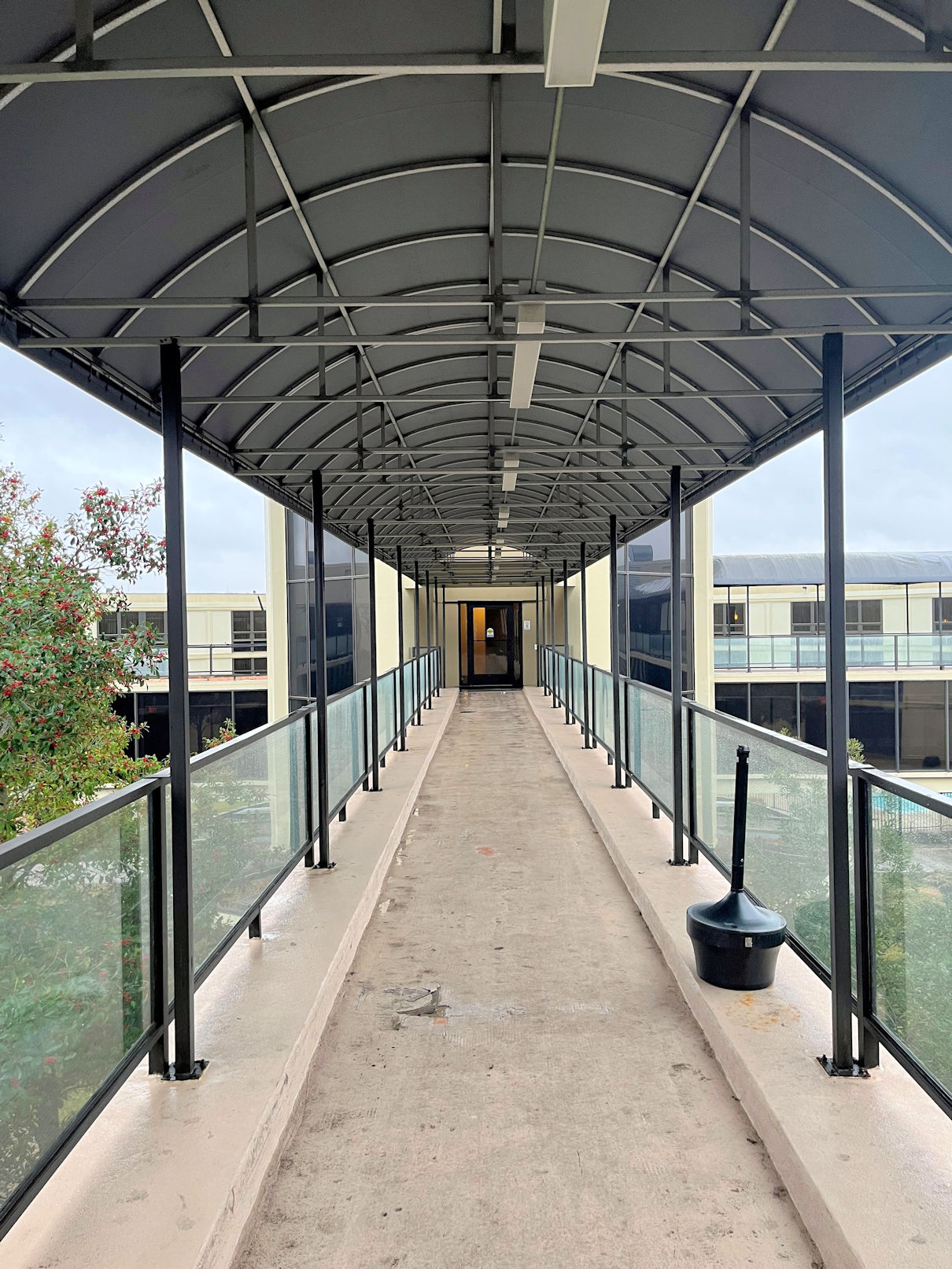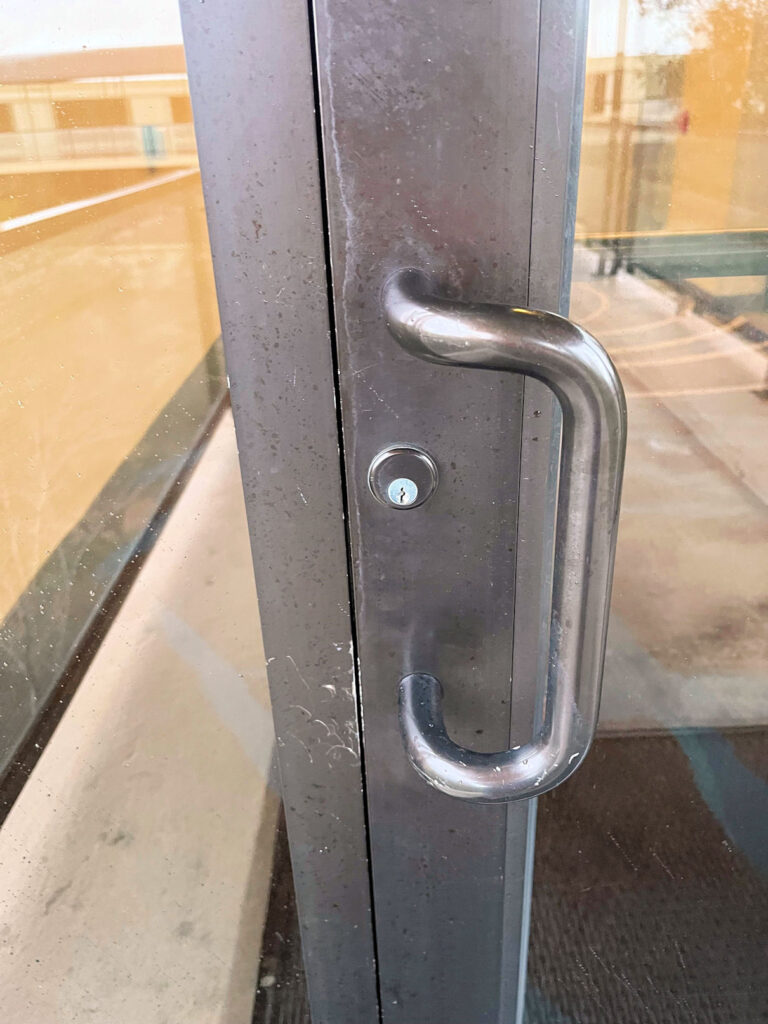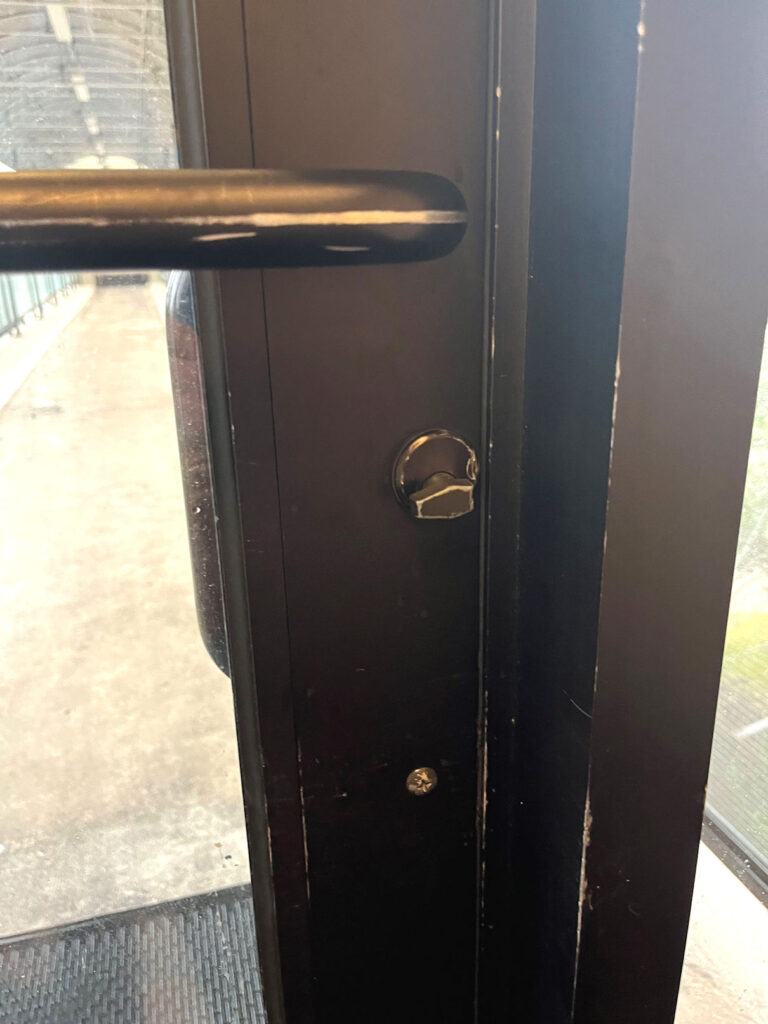I’m still on my way to the home of the first self-releasing fire exit latch…the bad news is that my connecting flight was canceled so I had an unplanned overnight pit stop. But the good news is that I found an interesting application to share!
The hotel has a central hub where the elevators are located, and the hotel rooms are in a circular building around the hub (think of the building with the hotel rooms as the tire). There are four bridges between the hub and the “tire” building – like four spokes on a wheel. The open bridges are on the third floor – there is an enclosed corridor under each bridge on the second floor. Here is one of the bridges:
The doors at each end of the exterior bridge swing toward the bridge, and are equipped with deadbolts operated by a key cylinder on the bridge side and a thumbturn on the interior of the hotel room building.
The bridge side of the door is in the photo on the left, the interior is in the photo on the right. Because the deadbolt is equipped with a thumbturn, it could be locked by anyone.
Although it didn’t keep me from sleeping last night, these doors could prevent egress from the bridge. The doors could be lockable if they met the requirements of the new section of the I-Codes addressing egress doors serving exterior spaces. Does anyone want to take a guess on what would be mandated by that section?
WWYD?
You need to login or register to bookmark/favorite this content.
















1. Where are the buttons to activate the automatic door openers??
2. Was there a request to exit device, that automatically opened the door,,, on either side??
3. Was the bolt in place?? I use to tell them, take the guts out and leave the rest,,,, so they got rid of the bolt, and did not have to cover holes in the door.
More than likely a required exit,,, plus it has one of those pesky exit signs over it.